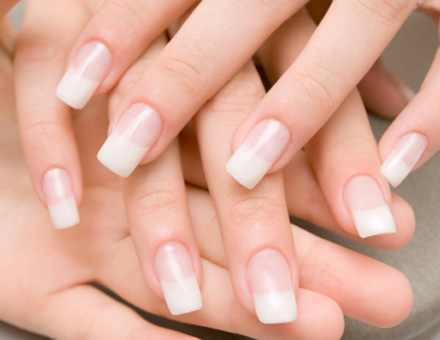
At the most recent annual meeting of The American Contact Dermatitis Society, Acrylates were crowned the Contact Allergen of the Year for 2012. Acrylates are plastic materials found in paints, adhesives, inks, resins and artificial fingernails. Acrylates are also used in a number of medical devisesincluding contact lenses, hearing aids and bone cements for orthopedic endoprostheses. Acrylates were bestowed this this year’s honor because they are “everywhere in the environment” said Dr. Donald V. Belisto, who announced the winner at the meeting.
We commonly see patients with allergic reactions on their skin, however it is very difficult to pinpoint what caused the allergy. Think about it… you come in contact with hundreds of items every day and any of those products could potentially cause an allergy. A common area we see allergic reactions are on the face. Many people start thinking about their make-up, face lotion, face wash, ect…as to what could have caused the allergic reaction. When you have a reaction on your face it is more commonly something you transfer from your hand to your face (i.e acrylic nails or nail polish).
Treatment for contact allergens commonly include topical cortisone treatment or oral prednisone. Most importantly is avoidance of the allergen, however this can be difficult if you don’t know what it is. Patch Testing can be done to attempt to establish the allergen. Patch Testing is an in-office procedure where large adhesive patches impregnated with various allergens are placed on the skin, typically the back. The adhesive patches are left on the skin for a few days and when removed the skin is examined for any reaction to the test. If a positive reaction is found we try to determine where the patient is coming in contact with the allergen.
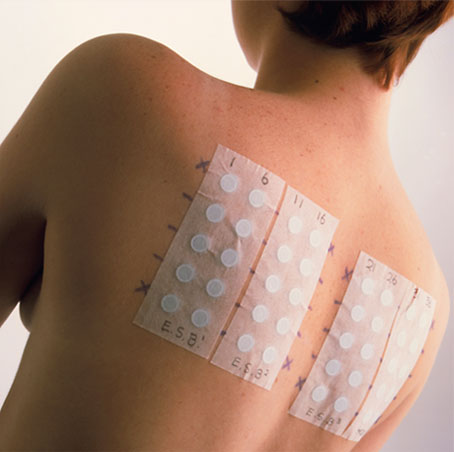
If your face is burning and itching let your nails go au natural, you could get some relief.
This entry was posted
on Wednesday, May 2nd, 2012 at 9:49 am and is filed under Skin Conditions.
You can follow any responses to this entry through the RSS 2.0 feed.
You can leave a response, or trackback from your own site.
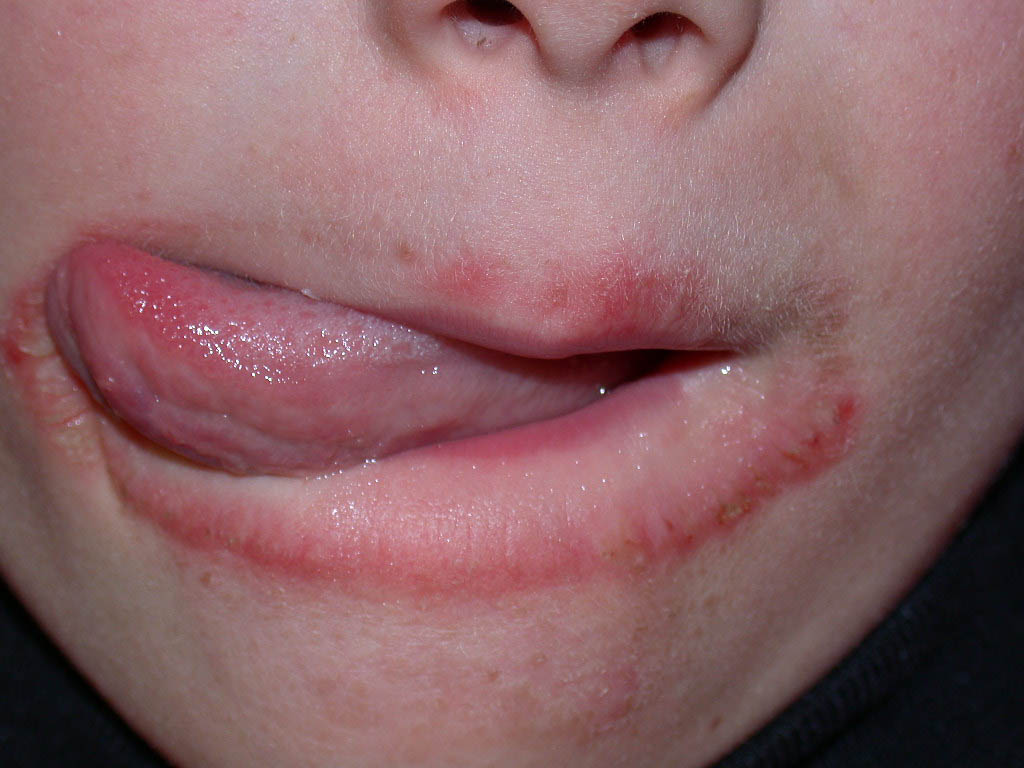
Lip dryness is, at a minimum annoying, and, at worst, painful. Dry lips may crack, become scaly and even bleed. One way to keep the lips moist is by licking them. As the skin around the mouth gets irritated, many will begin to lick at it, which makes it even more red and irritated. This leads to the classic lip licker’s dermatitis we see often in the winter.
The most important treatment is to stop licking your lips. This sounds easy, but it is hard for someone with dry lips. Regularly applying a bland moisturizer, as often as hourly, is necessary so you won’t feel the need to lick your lips. At bed time, a larger amount is needed to lessen lip licking while sleeping. In some cases prescription medications are required. With proper treatment, lip licker’s dermatitis goes away in a couple of weeks with no scarring or permanent skin damage.
Tips for treating Lip Licker’s Dermatits:
1. Minimize licking of Lips (very difficult)
2. Apply over the counter hydrocortisone ointment to affected areas twice a day
3. Apply Aquaphor ointment hourly or whenever you have the urge to lick your lips
This entry was posted
on Thursday, April 19th, 2012 at 1:35 pm and is filed under Skin Conditions.
You can follow any responses to this entry through the RSS 2.0 feed.
You can leave a response, or trackback from your own site.
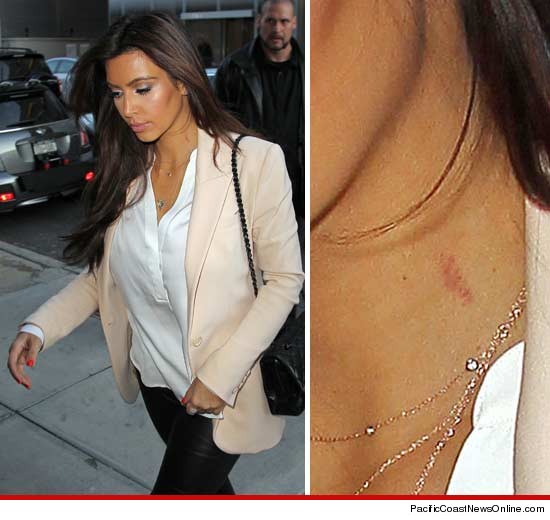
TMZ recently reported that Kim Kardashian was spotted sporting that telltale mark of love: a hickey. It makes sense considering it was spotted the day after her movie date with Kanye West. We’re calling PUBLICITY STUNT here at our office. What can Kim do to improve the appearance of her love bite? Unfortunately, there isn’t much you can do about this affliction. A hickey is nothing more than a bruise, and like all bruises it just needs some time to heal. You can, however, try a few tricks to make it fade faster.
- A cold compress such as an icepack or a bag of frozen peas should be applied to the affected area for 20-30 minutes in order to speed healing and reduce swelling by constricting the underlying blood vessels in response to the cold. Do not apply ice directly to the skin. Wrap the icepack in a towel.
- Avoid aspirin because aspirin slows the blood from clotting and may, in fact, prolong the bleeding.
- After about 48 hours, heat in the form of a warm washcloth applied to the bruise for 10 minutes or so two or three times a day may increase blood flow to the bruised area, allowing the skin to reabsorb the blood more quickly. Ultimately, the bruise will fade in color.
- Rub a little tincture of arnica or arnica gel onto the bruise. Arnica (Arnica montana) comes from a plant in the daisy family that grows in the Rocky Mountains, and may be helpful for bruises and sore muscles.
- Apply concealer in a shade that’s lighter than your natural skin color and discreet enough to fend off unwanted attention.
- The best treatment for a hickey: wear scarf and wait it out.
This entry was posted
on Monday, April 9th, 2012 at 9:06 am and is filed under Celebrities, Skin Care, Skin Conditions.
You can follow any responses to this entry through the RSS 2.0 feed.
You can leave a response, or trackback from your own site.

Summer weather is approaching leading many to squeeze a lime into their cold beer or margarita. Surprisingly, one might find her skin breaking out with a burning rash called phytophotodermatitis after handling that lime. Phytophotodermatitis occurs if chemicals in certain plants come in contact with the skin making the area sensitive to light. A common culprit causing this condition is limes leading to the name “margarita dermatitis” but it can also occur from contact with other plants such as celery, lemons, figs and Queen Anne’s lace.
Phytophotodermatitis is a skin reaction caused by contact with certain plant substances (furanocoumarins) in combination with sunlight. Furocoumarins are the photosensitizing chemicals in certain plants and fruits and are at their highest levels in spring and summer increasing the likelihood of exposure. Classic presentations of phytophotodermatitis include bizarre and red streaks, blisters, and streaks of darkening of the skin. Particularly helpful clues to the diagnosis include “drip marks”; irregular, bizarre “sunburns”; and handprint shapes.

Helpful Tips:
1. Avoid UV exposure or wear a sunscreen when in the sun.
2. Wash hands and any areas thoroughly that are exposed to juice of limes/lemons or other potential plants.
3. Use cold compresses to drain and soothe blisters if a rash develops and contact a doctor to decide if topical steroids are needed.
This entry was posted
on Friday, April 6th, 2012 at 6:00 am and is filed under Skin Conditions.
You can follow any responses to this entry through the RSS 2.0 feed.
You can leave a response, or trackback from your own site.
It’s that time of year. The nights are still cool but you want to be outside and rip the cover off your hot tub that has been in hibernation all winter and jump right in, WAIT!!! That warm whirlpool has been brewing some bacteria for the past months. There are a few things you need know before you enjoy a little warm water massage.
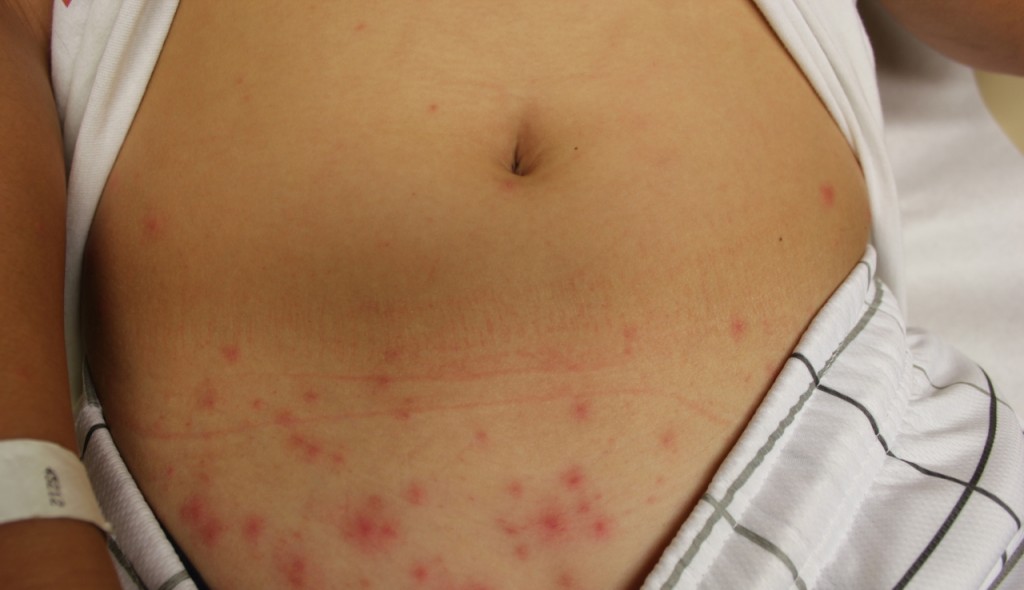
Last week an 11yr old boy came into the office complaining of a rash that appeared on his lower abdomen 3 days earlier. The appearance of his rash and it’s location were a certain giveaway for hot tub folliculitis. After some questioning, the patient’s dad let me know their hot tub had been broken and when it was finally fixed his son was so excited he couldn’t wait for dad to check the chlorine levels to get in. The next day his rash appeared.
Hot tub folliculitis is caused by the bacteria Pseudomonas aeruginosa. This form of bacteria thrives in hot tubs, especially hot tubs made of wood unless the water’s acid and chlorine levels are strictly controlled. Symptoms can be seen several hours to 2 days after coming in contact with the bacteria. It first appears as red itchy bumps and can progress to large, dark red, tender nodules filled with pus. The rash may be worse under swimsuit area where bacteria has been trapped for a longer period of time. If the condition is mild no treatment may be necessary. Antibiotics may be prescribed if the case is more severe. In the case of our 11 year old patient, he was put on oral antibiotics. At his check-up yesterday his rash was much improved.
Moral of the story: Clean and chlorine will keep you in the clear
This entry was posted
on Wednesday, March 28th, 2012 at 2:16 pm and is filed under Skin Conditions.
You can follow any responses to this entry through the RSS 2.0 feed.
You can leave a response, or trackback from your own site.










 Watch Video
Watch Video


